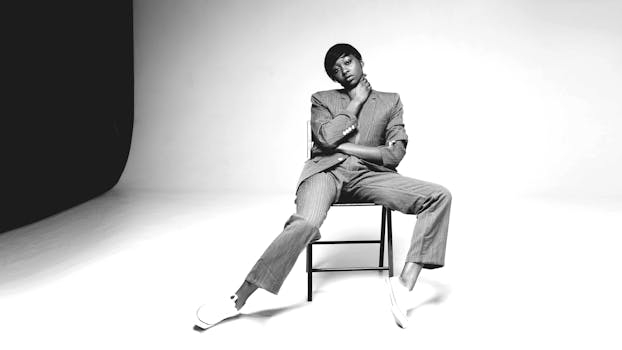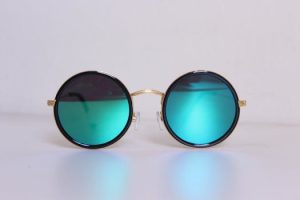Mood-Shifting Materials: Fabrics That Change with Your Emotions
The world of fashion and textiles is constantly evolving, and one of the latest trends to emerge is the use of mood-shifting materials. These fabrics have the ability to change their color, texture, and appearance based on the wearer’s emotions. Imagine a dress that turns from blue to pink as your mood shifts from sad to happy, or a shirt that becomes softer and cozier when you’re feeling stressed. Sounds like something out of a sci-fi movie, right? But it’s not just a far-fetched concept anymore. Mood-shifting materials are a reality and are set to revolutionize the fashion industry. Let’s explore this fascinating trend and discover how these fabrics work and why they’re gaining so much popularity.
The Science Behind Mood-Shifting Materials
Mood-shifting materials are made using special fibers that are embedded with microscopic nanoparticles. These nanoparticles are sensitive to temperature, light, and electric charge, and as a result, can change the way light reflects off the fabric, altering its color and appearance. This process is known as photonic or chromogenic textile engineering. The concept is similar to the iridescent feathers of a peacock or the changing color of a chameleon, but on a much smaller scale.
When you experience a change in emotions, your body temperature and brain activity also change. Mood-shifting materials react to these changes by absorbing or emitting different wavelengths of light, giving the fabric a new color or texture. This means that the color and appearance of the fabric are not just random, but directly linked to the wearer’s emotional state.
Types of Mood-Shifting Materials
There are various types of mood-shifting materials being developed and used in the fashion industry. Some of the most common ones include:
Thermochromic Materials
These materials change color based on temperature. As the name suggests, “thermo” means heat and “chromic” refers to color. This means that as your body temperature rises or falls, the fabric will change its color accordingly. This is one of the most popular types of mood-shifting materials, and you may have already seen it on clothing items like t-shirts, nail polish, and even hair accessories.
Photochromic Materials
Photochromic materials change color when exposed to different levels of light. These materials contain light-sensitive molecules that react to UV light, causing the fabric to change color. This means that as you move from indoors to outdoors, or from a dark room to a well-lit one, the fabric will change its color. This makes for some interesting and eye-catching outfits!
Electrochromic Materials
Electrochromic materials change color in response to an electric charge. These materials are commonly used in making electronic displays, but they are also being incorporated into fashion to create mood-shifting materials. With the use of a remote control or a smartphone app, the wearer can change the color or pattern of the fabric at the touch of a button, offering a completely customizable outfit.
How Mood-Shifting Materials are Changing the Fashion Industry
Mood-shifting materials are opening up a whole new world of possibilities in the fashion industry. From creating unique and interactive garments to designing clothing that can enhance the wearer’s mood, the potential is endless. Here are some ways in which mood-shifting materials are making an impact:
Expressing Emotions
Many people find it difficult to express their emotions, which can lead to bottling up feelings or experiencing mood swings. Mood-shifting materials give them a new outlet to express themselves without needing to say a word. With the use of these fabrics, they can showcase their emotions and wear it with pride.
Creating Interactive Fashion
With mood-shifting materials, fashion is becoming more interactive and engaging. The wearer’s emotions become part of the design, making each outfit unique and a true reflection of the individual. This adds a whole new level of personalization to fashion.
Enhancing Well-Being
Mood-shifting materials have the potential to enhance the wearer’s well-being. By using colors and textures that are known to have a positive impact on emotions, these fabrics can uplift the wearer’s mood and help them feel more positive and confident.
Reducing Waste
Mood-shifting materials have the potential to reduce waste in the fashion industry. With the ability to change color and appearance, one garment can be worn in multiple ways, eliminating the need to buy multiple pieces of clothing for different occasions.
The Future of Mood-Shifting Materials
The use of mood-shifting materials is still in its early stages, but it is rapidly gaining popularity in the fashion industry. With the advancements in technology and material science, we can expect to see more innovative and functional mood-shifting fabrics in the future. Soon, these fabrics may even be used in the production of home furnishings and accessories, further expanding its reach.
As we’ve seen, mood-shifting materials are not just a gimmick. They have the potential to revolutionize the fashion industry and change the way we express ourselves through our clothing. Who knows, in the near future, our clothes may not just be items we wear, but a way to communicate our emotions and connect with others. Mood-shifting materials are truly a game-changer and an exciting development in the world of textiles. Are you ready to wear your emotions on your sleeve?








